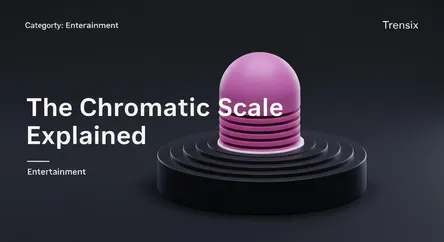Entertainment
The Chromatic Scale Explained

Explore the chromatic scale, a foundational concept in music theory. Learn how this twelve-tone scale, built on semitones, shapes modern music.
What is it?
The chromatic scale is a musical scale containing twelve pitches, each separated by a semitone—the smallest interval in Western music. Unlike major or minor scales, it uses every black and white key within one octave on a piano. For example, a chromatic scale starting on C includes all twelve notes (C, C♯, D, D♯, E, F, F♯, G, G♯, A, A♯, B) before reaching the next C. It represents the complete set of available pitches in an octave.
Why is it trending?
As a foundational element of music theory, the chromatic scale is perpetually relevant. Its importance is highlighted in modern music, from complex jazz improvisation to film scores and pop music. Producers and composers use it to build tension, create smooth transitions between chords, and write melodies that are more colorful and harmonically rich than those based solely on traditional scales. It is essential for understanding advanced harmony and atonal music.
How does it affect people?
For listeners, chromatic passages can evoke a sense of suspense, disorientation, or fluidity, making it a powerful tool in soundtracks to heighten emotion. For musicians, mastering the chromatic scale is crucial for developing technical skill, improving ear training, and understanding the fretboard or keyboard. It provides the ultimate palette of notes, allowing for greater freedom in improvisation and composition, moving beyond the confines of a single key.